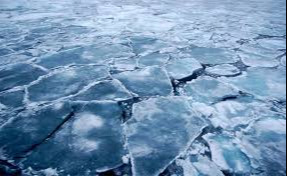
As of January 11, the ice thickness on most of Mongolia’s rivers and lakes continues to grow steadily. However, it remains five to 45 cm thinner compared to the same period last year. In some areas, ice thinning has been observed due to the formation of open-water areas and surface flow caused by warm currents.
Notably, the ice on rivers such as Khuder, Ongi (in Arvaikheer soum of Uvurkhangai Province), and Selenge (in Sukhbaatar soum of Sukhbaatar Province) has thinned by five to 10 cm over the past ten days. This trend highlights significant variability in ice conditions across the country. The thickness of the ice varies considerably along the full length of rivers and across lake surfaces, posing a risk to those attempting to cross.
The National Agency for Meteorology and Environmental Monitoring has issued a critical warning, emphasizing that the current ice thickness is insufficient to safely support the weight of people, livestock, or vehicles. The agency strongly advises against using frozen water bodies as shortcuts or attempting to transport goods or travel over ice surfaces.
Authorities strongly urge citizens to prioritize their safety and exercise extreme caution by refraining from any activities that involve crossing frozen rivers or lakes. Despite the cold temperatures, the ice’s load-bearing capacity remains insufficient in many areas, posing significant risks to individuals, livestock, and vehicles. Engaging in such activities could lead to accidents, injuries, or even fatalities, as the ice conditions are unpredictable and unstable.
Compliance with this advisory is not just a precaution but a vital measure to safeguard lives and prevent potential tragedies during the winter season. The public is reminded that shortcuts or attempts to save time by traveling across ice-covered surfaces are not worth the danger they present. Authorities emphasize the importance of staying informed about local ice conditions and adhering to safety guidelines issued by the agency. Prioritizing safety and avoiding unnecessary risks will help ensure a secure and accident-free winter for everyone.